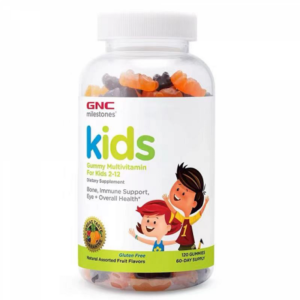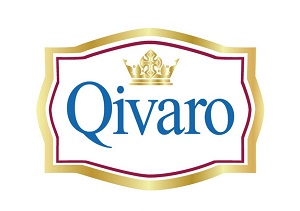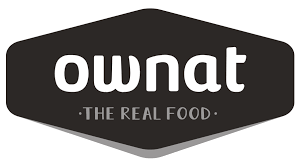
Healthy Eating Guidelines for Diabetics
Mayo Medical Center is currently the world's largest private healthcare system. It comprises eight medical facilities and five medical schools, and is ranked second in U.S. News & World Report's Best Hospitals survey, receiving high praise for its quality of care. *CommonHealth* magazine launches the "Mayo Clinic" column, featuring top-tier physicians from around the world helping you improve your health.
★Don't be afraid of diabetes! Register now for the diabetes seminar on September 30th >>
The term "healthy eating" often evokes fear. Many people think, "Oh no, I'll never be able to eat the foods I like again!"
There's no need to panic. People with diabetes can still enjoy delicious food. They may just need to limit portion sizes, change cooking methods, or adjust meal times.
To assist with diet planning, the American Diabetes Association classifies carbohydrates into four main categories:
■ Starch—Starch is a polysaccharide, including bread, cereal flakes, rice, pasta, beans, and certain vegetables such as corn, potatoes, and squash.
■ Fruits — Every fruit contains monosaccharides, including familiar fruits such as apples, bananas, oranges and kumquats, persimmons, and prickly pears.
■ Dairy products — Milk and dairy products both contain monosaccharides.
■ Vegetables — This category includes non-starchy vegetables, such as lettuce, asparagus, and cucumber.
Daily caloriesHalf of the calories should come from carbohydrates. Based on the required calories, this should include: 6 or more servings of starch, 2 to 4 servings of fruit, 2 to 3 servings of dairy products, and 3 to 5 servings of vegetables.
Combination of carbohydrates
The best approach is to consume a combination of monosaccharides and polysaccharides. The benefit of consuming polysaccharides is that they prolong the time it takes for the body to break them down into monosaccharides, thus increasing the rate at which sugar enters the bloodstream. Conversely, consuming foods containing monosaccharides allows sugar to enter the bloodstream more quickly.
Fiber-rich foods should also be included in carbohydrate intake. The more fiber a food contains, the slower it is digested, and the more gently it raises blood sugar levels. Recent studies have highlighted the benefits of fiber, noting that high-fiber foods can lower blood sugar and cholesterol levels in people with type 2 diabetes.
However, when it comes to carbohydrate consumption, the most important factor is not the variety, but the quantity. If a patient consumes more carbohydrates than usual, the body's insulin may not be sufficient to transport all the sugar into the cells, leading to a rise in blood sugar levels. Another way to control blood sugar is to divide the same amount of carbohydrates into multiple portions and eat them at intervals throughout the day.
Sugar dosage
For decades, diabetics have been told to avoid sugar. Even today, for many diabetics, this remains the first misconception upon diagnosis, leading them to give up sweets forever. But this is no longer the case, and here's why:
For years, medical experts believed that honey, candy, and other sweets raised blood sugar levels faster and more significantly than fruits, vegetables, and sugary foods. Therefore, diabetics were advised to avoid sugars. However, many studies show this is not the case. All carbohydrates affect blood sugar levels in the same way. As long as sweets are included in regular meals and their calorie content is calculated, they will not cause blood sugar levels to rise too quickly.
However, it's best to consume sugar in moderation. Consuming large amounts of sugar can significantly affect blood sugar levels. Sweets such as candy, cookies, and soda have very low nutritional value; consumers simply get extra calories without any nutritional benefit, and these excess calories often lead to weight gain.
After eating sweets, you can test your blood sugar to understand the different effects of different sweets. Alternatives to sweets include sugar-free foods made with artificial sweeteners. However, please remember that sugar-free foods still contain a significant amount of carbohydrates and calories.
Protein: Strength
The body uses protein for growth, maintenance, and as an energy source. Protein-rich foods include meat, poultry, eggs, cheese, fish, legumes, and peanut butter. If you consume more protein than your body needs (which is the case for most people), the excess calories from protein will be stored as fat.
For most people, a healthy diet should provide 10-20% of their daily calorie needs from protein, which is roughly equivalent to 2-3 servings of protein. When planning your diet, choose low-fat protein sources such as plant-based products, fish, skinless chicken, duck, goose, lean meat, and low-fat or fat-free cheese. Limit or avoid fatty meats, eggs, and high-fat cheese.
Fat: a major source of calories
Fat is the most concentrated source of food energy, providing a large amount of calories but very little nutritional value. Fat is found in meat, poultry, fish, cheese, butter, margarine, oils, salads, whole milk, desserts, and snacks. The body needs some fat, but problems arise when too much is consumed.
Not all fats are created equal. Fats can exist in various forms, including saturated, polyunsaturated, and monosaturated, or a mixture of all three. Polyunsaturated and monosaturated fats, found in seafood, olive oil, canola oil, nuts, and avocados, are healthier than saturated fats. Saturated fats are found in meat, whipping cream, and butter. However, regardless of the type of fat, they are all very high in calories.
Everyone, including diabetics, should limit their daily fat intake to less than 30% of total calories, and saturated fat to less than 10%. Saturated fat raises blood cholesterol, and high blood cholesterol is a major cause of heart disease.
Related Post:
Related Products:
-
Sale!
 Out of stock
Out of stock
GNC – Children's Multi-Purpose Gummies 120 capsules
Original price was: $148.00.$120.00Current price is: $120.00. Read more -
GNC – Chewable Children's Multivitamins Natural Mixed Berry Flavour 60 Tablets
Original price was: $135.00.$118.00Current price is: $118.00. Add to basket -
GINAX – Manuka Honey UMF™ 5+ 30g
Original price was: $30.00.$25.00Current price: $25.00. Add to basket -
GNC – Pro Performance 100% Whey Protein (Chocolate Flavour) 887.5g
Original price was: $420.00.$318.00Current price is: $318.00. Add to basket







































































